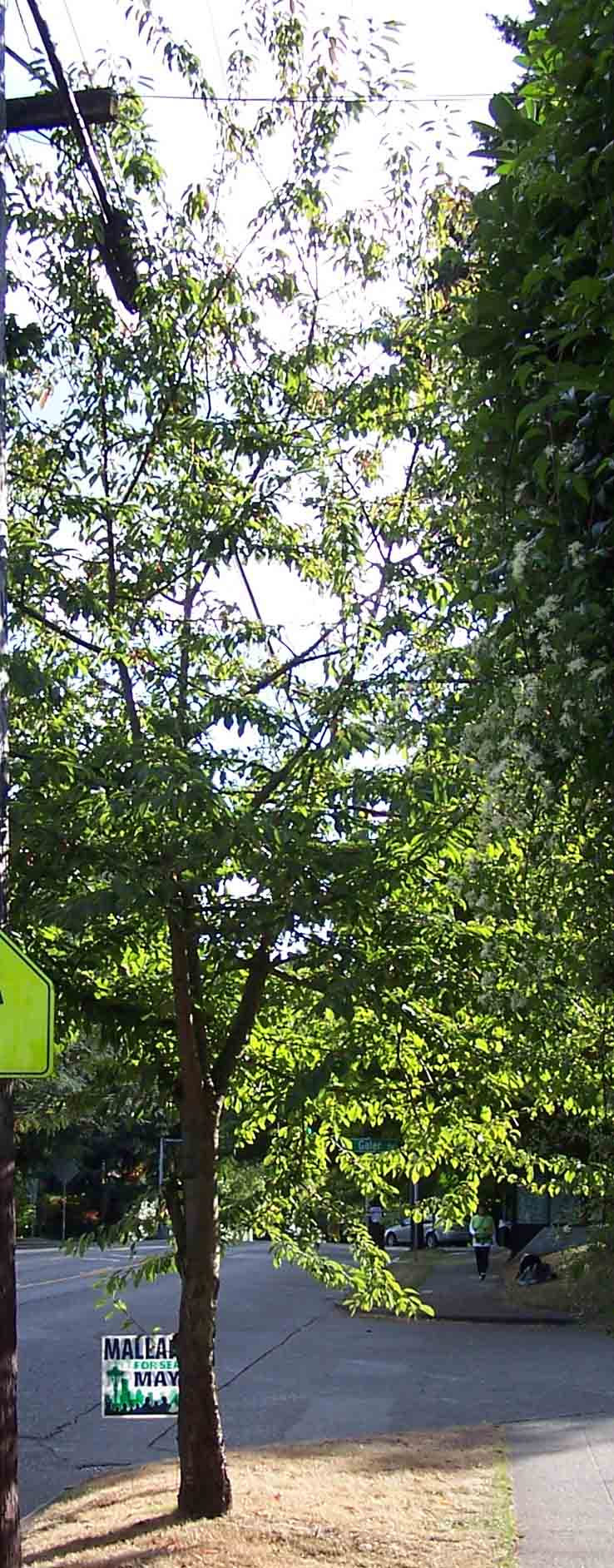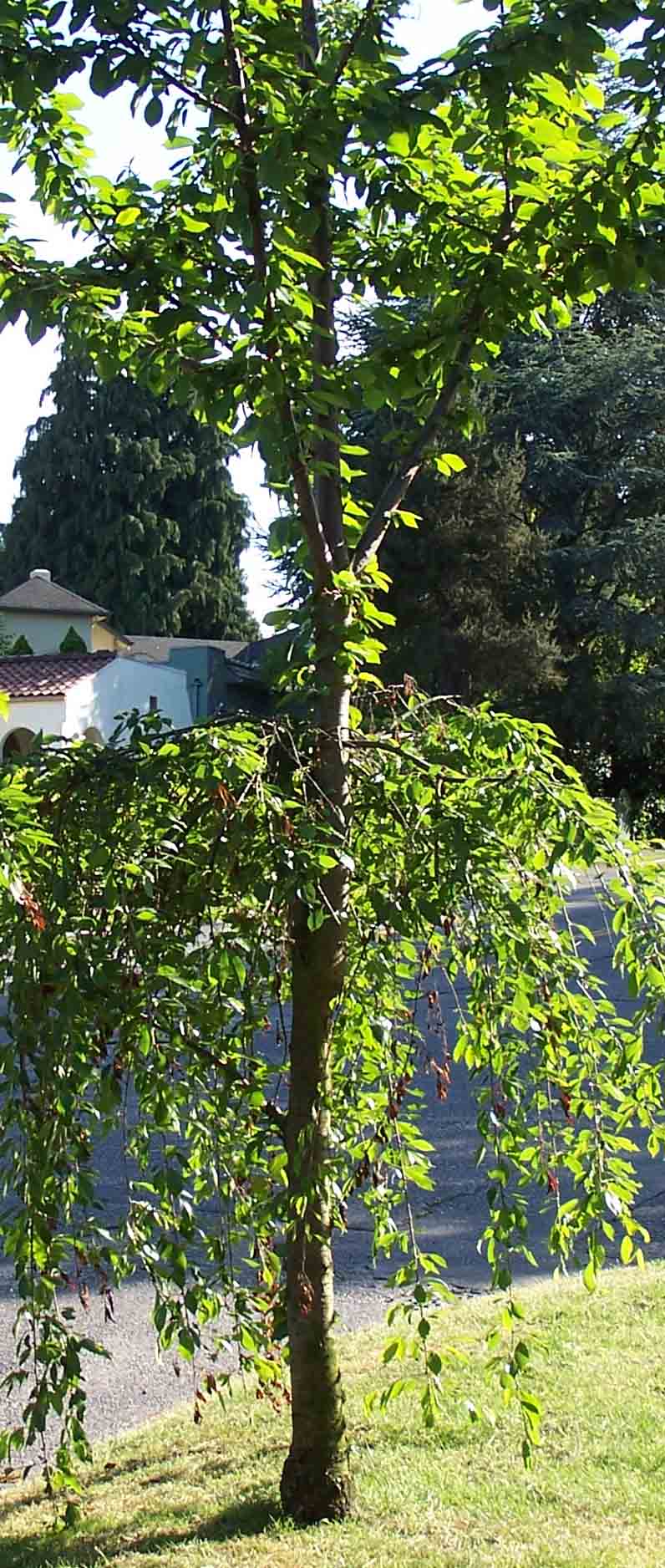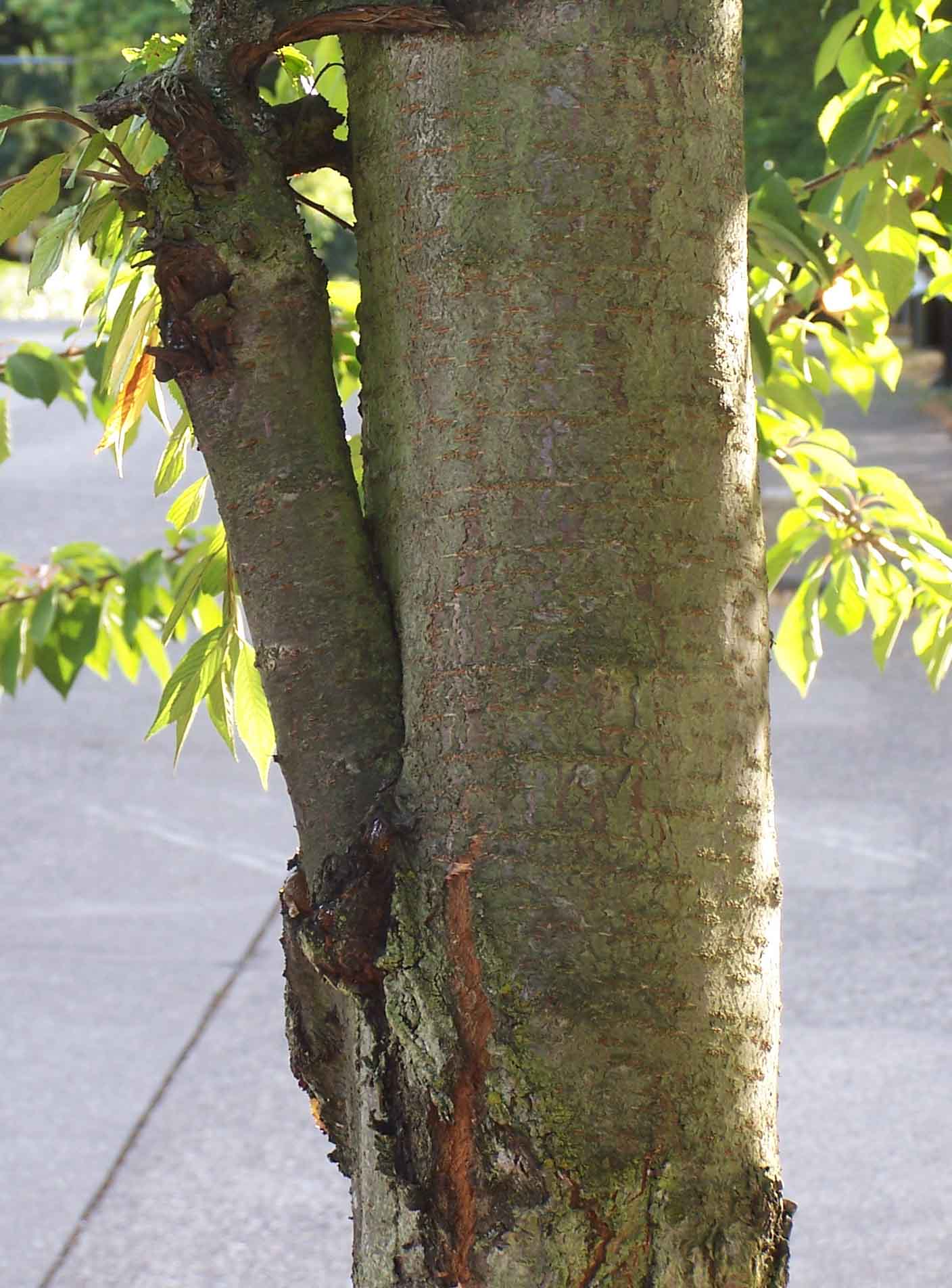It’s election season – but that’s not why I’m doing a blog on “graft and corruption.” Instead, let me back up and explain that today I gave a seminar on diagnosing urban tree death. One of my points to the group was the importance of knowing the history of a site – what species were selected, how trees were planted, whether there had been any major construction activity, etc. I thought I’d continue the importance of site history into today’s posting.
Here’s a photo of a street tree – a Prunus spp. (Disclaimer: I am not endorsing a candidate for Mayor of Seattle despite the appearance of a campaign sign in the photo.) It’s a healthy enough specimen, though possibly a bit large for this narrow planting strip:

Several years ago you would have seen a different tree in this same spot:

Now did this weeping cultivar somehow transform into an upright form? Let’s look at this second photo in its entirety:

This reminds me of my favorite childhood book on Greek mythology, which had a great drawing of Athena springing from the head of her father, Zeus. Yes indeed, we are seeing the scion of a grafted tree lose the battle to the rootstock. Rootstocks, by their very nature, are vigorous. If we revisit the first photograph again, this time a little closer, we can see all that remains of the poor scion:

Lesson: if you are using a grafted tree in the landscape, you need to keep the rootstock under control. Grafted trees are probably not good choices for low-maintenance landscapes.
Beauty guys…
Great photos! I bet that Athena never collided with any utility lines, though.
I just saw a tree like this at a potential client's property. It was also a weeping cherry that was about 5 feet high (so planted within the last few years?) with one central leader going straight up. What can you do to correct this at this stage, just prune that central leader out?
Yes, you should prune it out. Depending on your location, you may need to wait for the best time to prune. (For instance, in our climate it is cool and moist in the winter, which means the risk of fungal spore contamination on pruned, horizontal surfaces is high.) But do take it off before leaf flush in the spring.
I know this was a post about the graft, but how about wrong plant/wrong place. A weeping cherry tree within 5 feet of the roadway on 2 sides? If the rootstock hadn't taken over, a delivery truck would have taken out the branches in a couple of years.